
Data, metrics and KPIs are essential to marketing success in a B2B SaaS and any B2B company. With the amount of data available to you, it can sometimes be difficult to know which metrics to measure and which ones of these should be your key performance indicators (KPIs). In this article, we’ll run through which marketing metrics you should be measuring and which ones you can use to set as key performance indicators.
B2B SaaS Marketing Metrics & KPIs
There are so many data points you can measure when it comes to marketing it can be difficult to know which ones to pay attention to. Based on our experience we’ve put together a list of B2B SaaS marketing metrics and KPIs that you can use to measure your performance.
To segment our metrics we’re going to divide them by the different stages of the marketing funnel from the top to the bottom. We’ll also categorize them by the different marketing channels where appropriate.
B2B SaaS Business Growth Metrics
These are the most common metrics used by B2B SaaS companies to monitor the health and the growth of the business. These are not specific to marketing but they are used by marketing teams as a way of measuring their performance in relation to the business objectives. These metrics differ from what some people call "vanity metrics", these are metrics which are deemed to sound good but actually don't impact the business.
Customer Acquisition Cost (CAC)
CAC measures the cost of acquiring a new customer. It includes expenses related to marketing and sales efforts. A lower CAC is generally better as it means you're acquiring customers more efficiently.
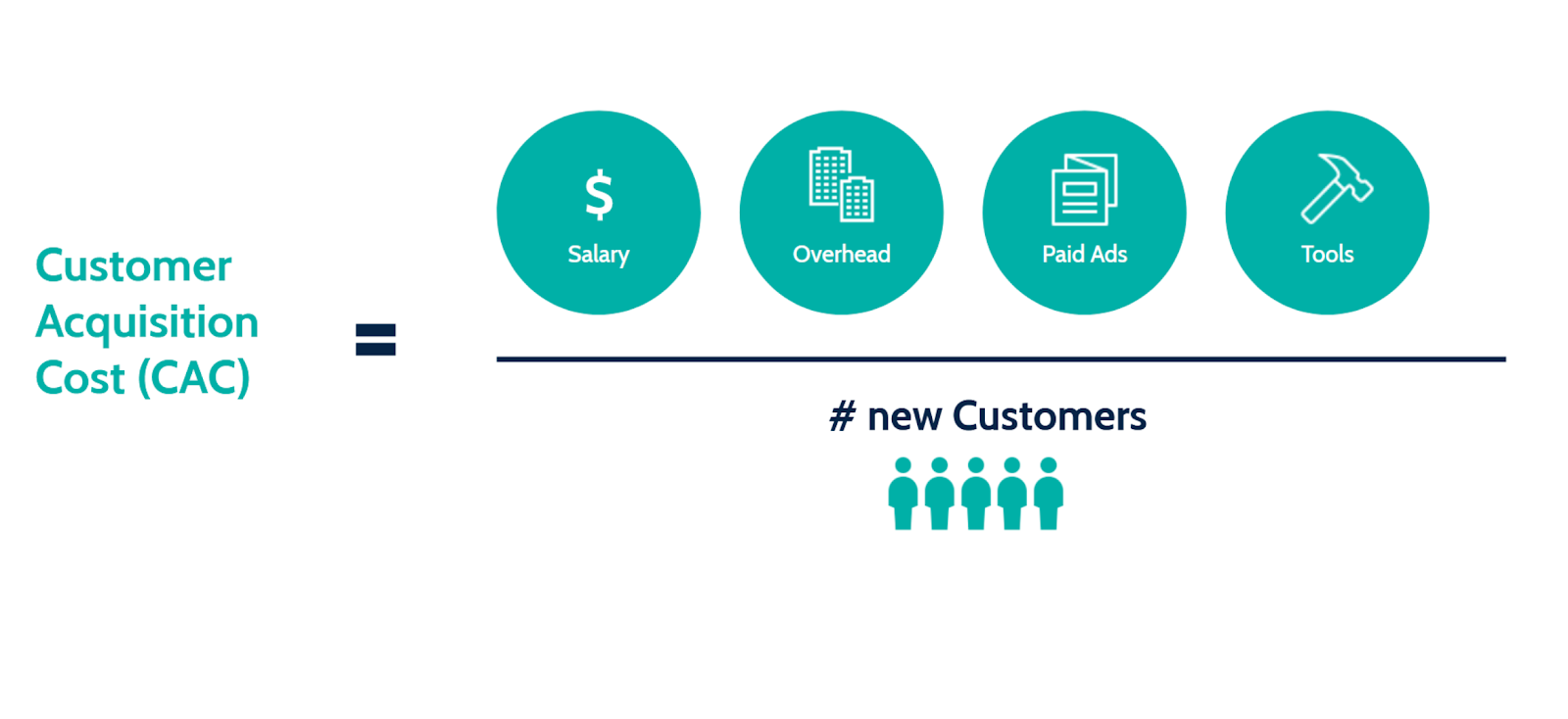
https://kpi-max.com/customer-acquisition-cost-cac/
Customer Lifetime Value (CLTV or LTV)
CLTV represents the total revenue a customer is expected to generate over their lifetime as a customer. It helps assess the long-term value of acquiring a customer and guides marketing and retention strategies.

Churn Rate
Churn rate measures the rate at which customers cancel or stop using your service. It's important to track to ensure you're retaining customers. Lower churn rates indicate better customer retention.
![A complete guide on Churn Rate [ Definition + Calculation + Steps to Improve]](https://cdn.prod.website-files.com/68dce8e2ef1cca3162ba1156/68e95eeb7e10660a060a0c74_64fcb318a1fe9a092b715e07_churn%252520rate.png)
Monthly Recurring Revenue (MRR)
MRR is the revenue generated from monthly subscriptions. It provides a predictable view of your recurring revenue stream, helping with financial planning.
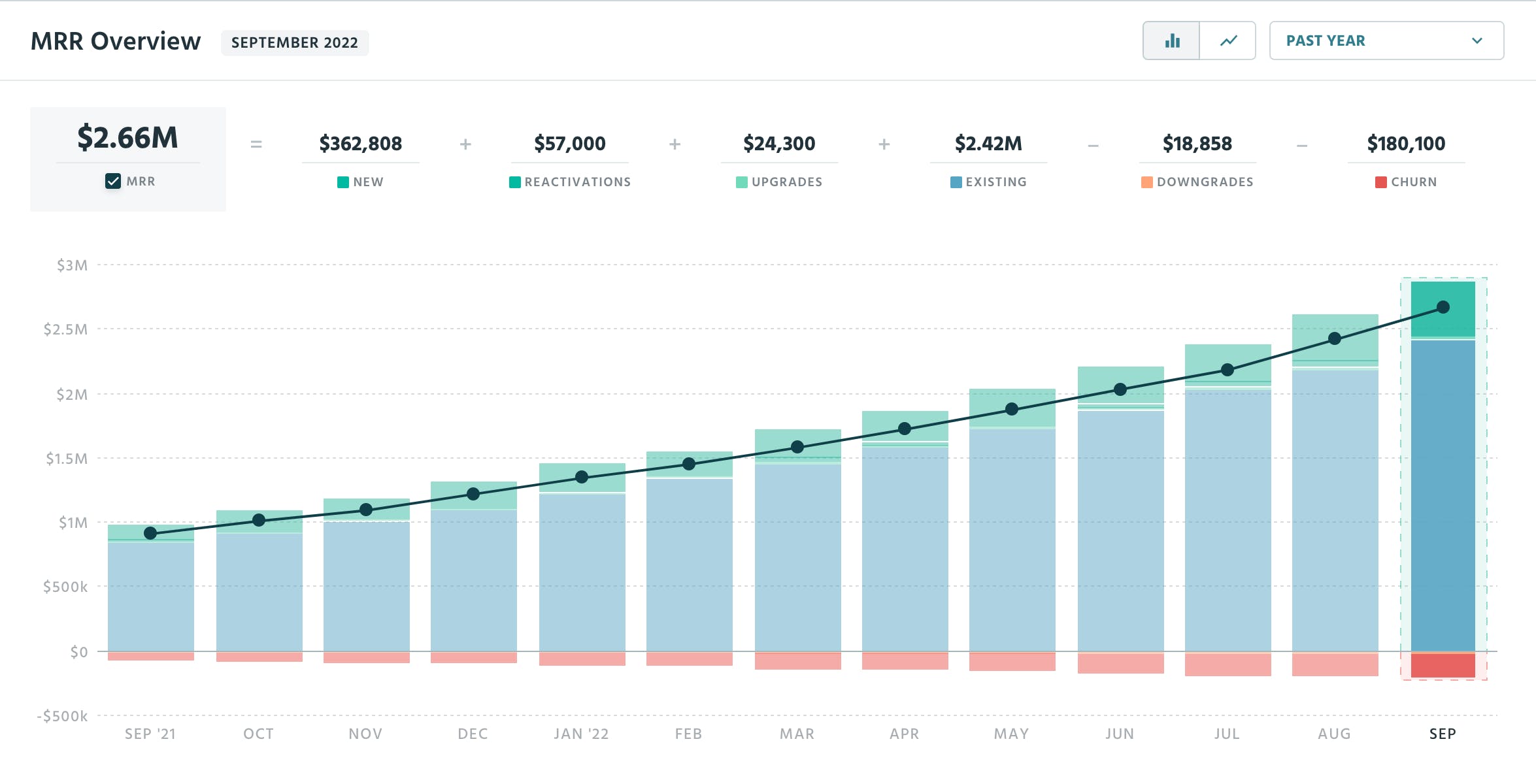
Annual Recurring Revenue (ARR)
ARR is similar to MRR but represents the revenue generated from annual subscriptions. It helps understand long-term revenue stability.
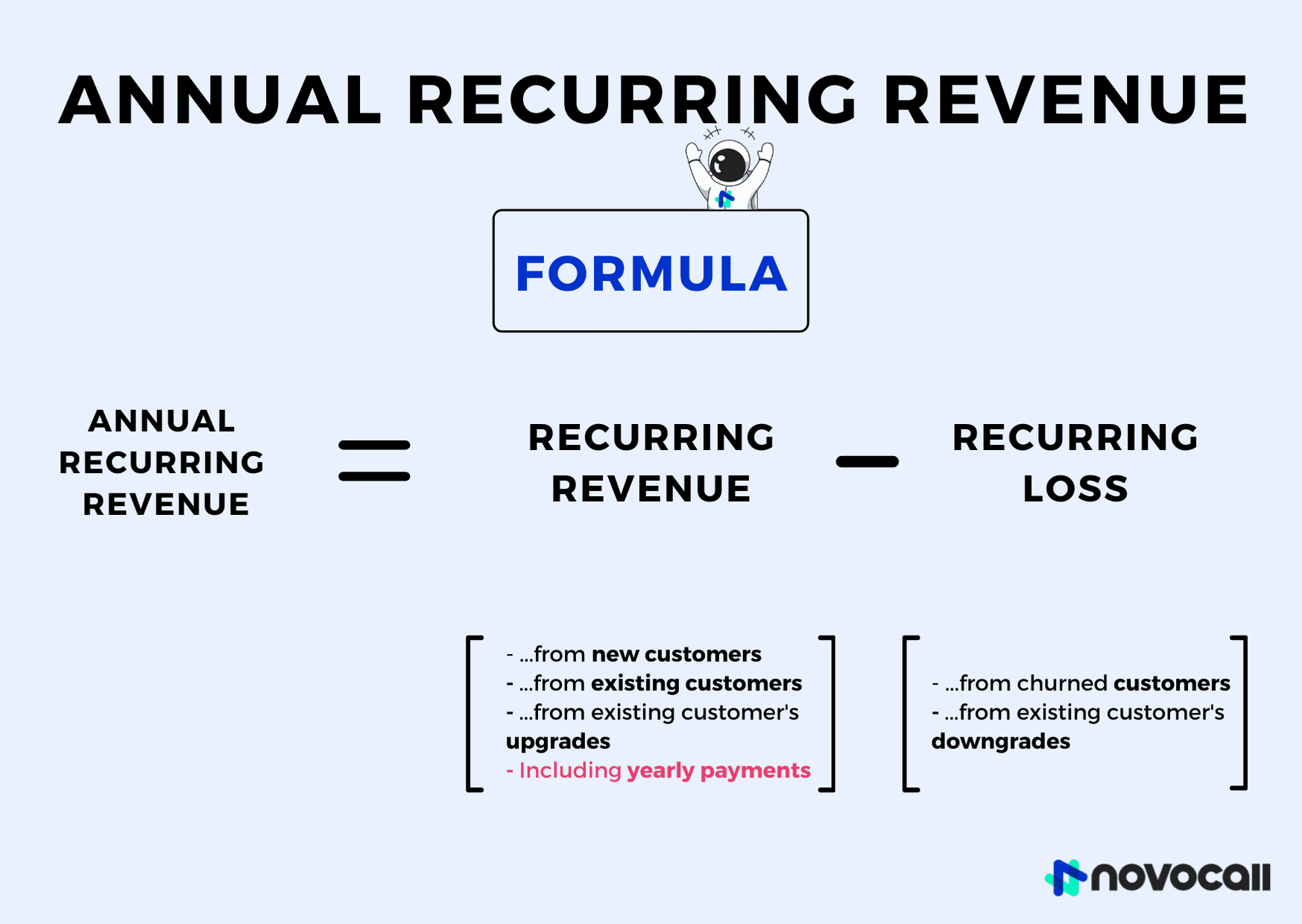
Net Promoter Score (NPS)
NPS measures customer satisfaction and loyalty. It's typically measured by asking customers how likely they are to recommend your product to others. A high NPS indicates satisfied customers who are likely to refer others.

Conversion Rate
Conversion rates measure how effective your marketing efforts are at turning prospects into customers. This can include conversion rates for website visits to sign-ups, free trials to paid subscriptions, and more.

Customer Retention Rate
This metric measures the percentage of customers you retain over a specific period. High retention rates are crucial for the long-term success of a SaaS business.
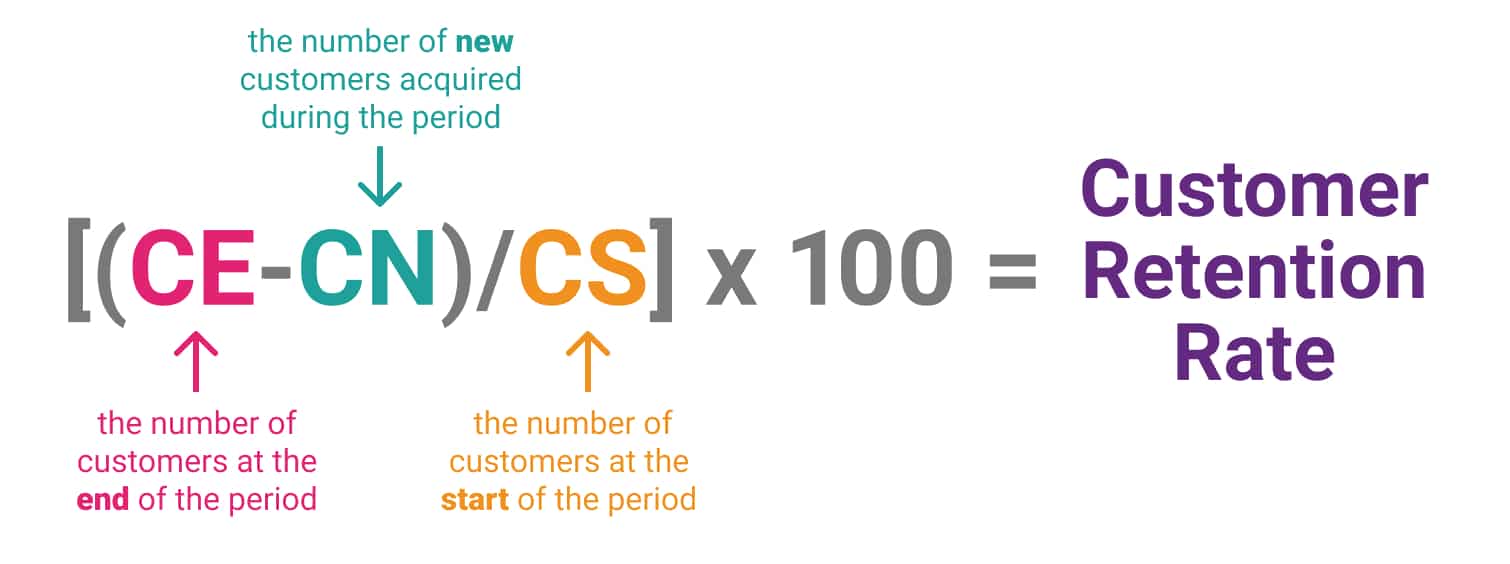
Gross and Net Revenue Churn
These metrics measure the revenue lost due to churn. Gross revenue churn includes all lost revenue, while net revenue churn considers expansion revenue from existing customers (upsells and cross-sells). Negative net revenue churn is a positive sign.
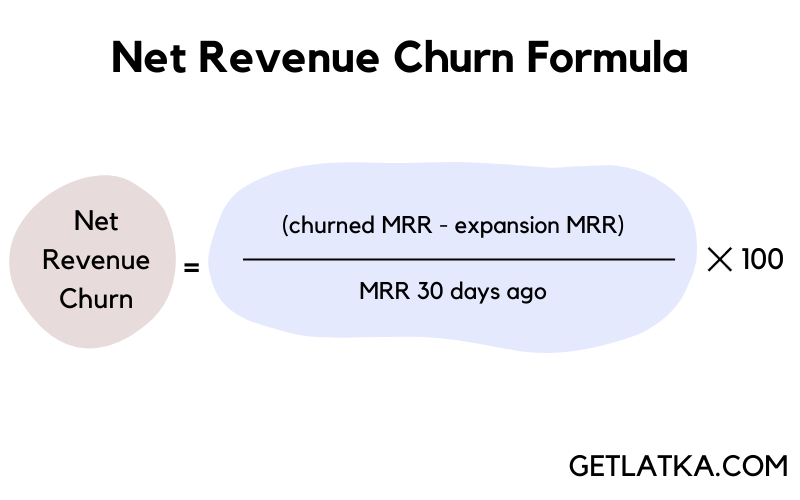
5 Top of Funnel (ToFu) SaaS Marketing Metrics
At the top of the marketing funnel, we are looking to increase awareness, engagement and demand for our products and/or services. This means we want to be looking at metrics that measure things like impressions, views and traffic.
Metric 1: Google Search Impressions
The number of impressions your website receives on Google is a good indicator of future success when it comes to inbound traffic. An impression is when your website appears in a search result and is correlated to your search engine ranking, the higher the ranking the more impressions you will receive.
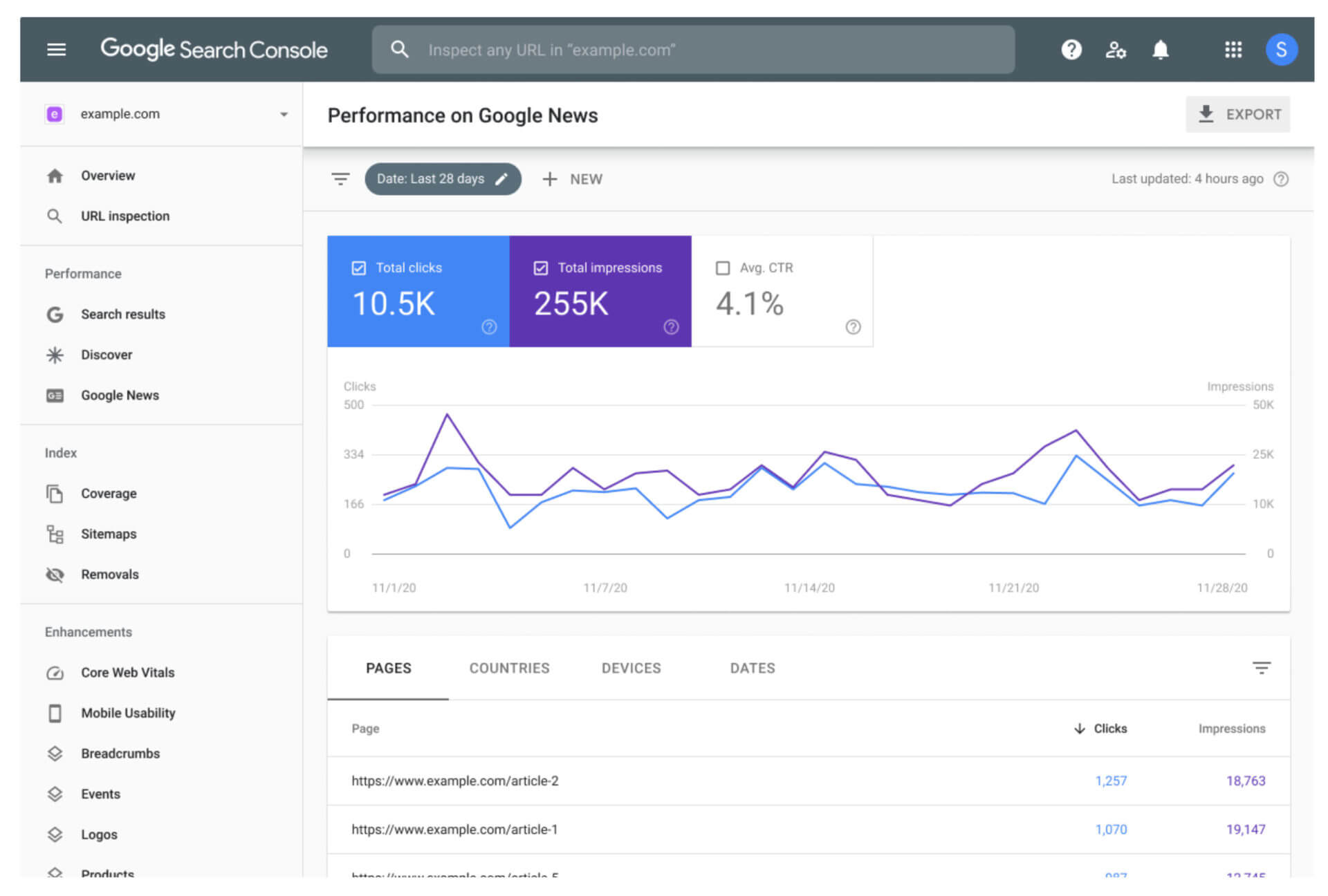
Metric 2: Google Search Impressions (Branded)
The number of branded search impressions is a sub-measure of the previous impressions metric. This metric measures the number of times your brand name is searched for and is an indicator of an increase in the number of people who are aware of your brand.
Metric 3: Google Search Ave. Ranking
This metric is the average rank from 1 - 100 of the keywords that you'd rank for in Google. The lower this metric the better your ranking in Google and therefore the more likely you are going to get people clicking on your search result.
Metric 4: Google Search CTR (Click Through Rate)
Intertwined with impressions and average ranking. Your Google CTR measures impressions/clicks. This is usually correlated with your average search ranking.
Metric 5: The total # of keyword rankings
The number of keywords your website ranks for in search engines is a good leading indicator of how much website traffic you will receive. The more keywords you rank for the more traffic you are likely to receive.
7 Top of Funnel Paid Media Metrics
Paid metrics relate to your paid marketing strategy. This typically includes channels such as Google ads, LinkedIn, Facebook etc.
1. Google Ad Spend ($)
Perhaps obvious but an important metric to track is the amount of money you are spending on your PPC campaigns in tools such as Google Ads or Bing Ads. This metric is not useful on its own and should be combined with conversions to monitor your

2. Google Ad Conversions (#)
The number of conversions you receive through Google Ads is really important to measure as this is a foundational metric for measuring your ROI and how much you are spending to gain a certain amount of conversions (Cost Per Conversion).
3. Cost Per Conversion ($)
Cost per conversion is a really important metric when assessing your PPC campaigns. This metric can also be viewed as a KPI because the amount you pay for a conversion can be an important measure of success. For example, if you are paying too much for a conversion you may not make your money back quick enough if you do indeed convert the customer.
4. Google Ad Clicks (#)
The number of clicks you get directly impacts your spending. As the term Pay Per Click suggests you will be spending your budget every time someone clicks on your ad. This metric can be combined with Average Cost Per Click ($) to estimate how much you will spend.
5. Cost Per Click ($)
Cost Per Click is the amount you pay every time someone clicks on your ad. This number can vary a lot because platforms like Google Ads are essentially an auction with varying prices based on supply and demand. Most marketers will typically use Average Cost Per Click ($) as a better metric to measure.
6. Click-Through Rate (%)
The click-through rate is the number of clicks divided by the number of impressions your ads have received. This gives you the percentage of times your ads are clicked on when they are seen.
7. Ad Impressions (#)
The number of ad impressions is a measure of how many times your ads are viewed on a specific platform. In most cases on Google Ads. This metric can be compared directly against your organic impressions to measure the balance between PPC impressions and organic impressions.6 Middle of Funnel (MoFu) Marketing Metrics
6 Middle of Funnel KPIS
At the middle of the funnel, your potential customers are in the consideration stage and they have already shown some interest in your business so far but have not converted into a customer. In the middle of the funnel the contact is usually within your CRM system and the metrics typically relate to how they move through the funnel and become a closable opportunity.
1. The total # of Leads
The number of leads is typically the number of contacts that enter your CRM system through a marketing channel. For example through submitting a form on your website or attending an event.
2. Average Lead Score
A lead scoring system is a way of measuring the quality of your leads. The higher the score the higher the quality of the lead. It’s important to differentiate here the difference between lead fit score and engagement score. The lead fit is a measure of how closely they match your ideal client profile wher whereas the engagement score is a measure of how engaged with your marketing efforts they are.

3. Average Lead Engagement Score
The engagement score is a measure of how engaged the lead is with your marketing efforts. These are often nurturing emails and event invites along with re-marketing ads.
4. The total # of Marketing Qualified Leads (MQLs)
To be able to measure this metric you need to have a documented way of qualifying a lead. Typically for a B2B business, this can be done with a combination of firmographic data and conversion actions, such as requesting a demo of your software or signing up for a free trial. Typically this can be combined with the average Lead score fit.
6. Lead to MQL Days (#)
This metric measures the time it takes a lead to turn into an MQL once it enters your database. The usefulness of this metric is dependent on how you measure MQLs a your threshold is low then this metric will always be low.
6 Bottom of Funnel KPIs
At the bottom of the sales and marketing funnel, we are looking to measure metrics that indicate how many contacts in our pipeline are turning into paying customers and how that process is going.
1. The total # of SQLs
This metric again requires a definition of what a Sales Qualified Lead (SQL) is to your business. For most companies, an SQL is when an MQL has been engaged by the sales team and it has been vetted as a legitimate opportunity to sell and has a value assigned to the deal.
2. The total # of Closed Won Deals
The number of closed won deals is quite self-explanatory but it is really important to monitor this metric to ensure you are tracking the revenue generated by your marketing campaigns. You also use this metric to calculate a client's average deal size or average lifetime value.
3. SQL > Closed Won Conversion Rate (%)
As with previous metrics, a conversion rate metric can only be calculated by dividing one thing by another. In this case, it’s the number of Closed Won Deals by the number of SQLs. Theoretically, it is a sales performance metric but it depends on how well-defined your target audience is and how well-developed your product is as fairly often this is the stage when a product undergoes the most scrutiny.
4. Average Deal Value ($)
The average deal value is the average amount of all the deals or opportunities you generate. In an ideal scenario you want this to be as large as possible but this of course depends on what you sell, how much you sell it for and who your target audience is.
5. Closed Won Deal Amount ($)
This is the total value of your closed won deals. Typically this equates to revenue generated. This value is often more useful when compared month over month as this indicates how well your business is performing and growing.
6. Average Lifetime Value ($)
The average lifetime value (ALV) o looks at the annual revenue you get from a customer and also the lifespan of the customer. As an example, if a customer generates 1 million dollars in a year and has a contract for 3 years then this lifetime value would be 3 x $ 1 million equalling $ 3 million. This is very common in SaaS companies to measure because the business model is usually based on recurring revenue such as license subscriptions.
A Summary of KPIs
To be honest a large percentage of the metrics above can be utilised as KPIs, especially the ones further down the funnel. However, to make things a bit clearer we’ve listed some of the most common and popular KPIs below for your reference.
For most of these KPIs, we would recommend measuring them every month due to the length of a B2B buyer journey but you can of course keep track of them daily and weekly too if you would like.
How to measure the efficiency of your marketing funnel
The efficiency of your marketing strategy can be measured by the efficiency of your marketing funnel, from website sessions at the top to new customers at the bottom. The more efficient the higher your conversion rates are from one stage to the next.
If you spot an inefficiency at one of your stages, it can be a symptom of a few different things and is not always as straightforward as you may think.
The 4 KPIs You Need to Measure Funnel Efficiency
Below is a table containing the 4 conversion rates you need to measure to be able to measure the efficiency of your sales and marketing funnel and then be able to take action.
Diagnosing poor conversion rates
Often when you are analysing your metrics you will wonder what is causing the data to be what it is. Below we list 3 of main metrics that people want to diagnose - they all revolve around conversoin rates.
Poor Website conversion rate
A poor conversion rate on the website can be down to a poor choice of Call To Action (CTA) which is putting people off. It can also be about the overall performance and content on your website not persuading people to action, it can also be a symptom of attracting the wrong type of traffic on your website. If you suffer from a poor conversion rate, we recommend checking and testing the above.
Poor Lead to MQL conversion rate
Once someone has converted on your website you ideally want to score that lead to see if they are a good fit for your business. A good fit lead that has taken action on your website will often become an MQL. Therefore if you are suffering from a Lead to MQL conversion rate this can be a symptom of you attracting the wrong type of person to your website, You are potentially targeting the wrong audience so you should review your inbound marketing strategy and tactics.
Poor MQL to SQL conversion rate
A poor MQL to SQL conversion rate usually means a lack of shared understanding between Sales and Marketing but it can be impacted a lot by how marketing qualifies leads and how much intent is behind them. If a lead doesn’t show much intent to buy but they are an MQL then they are less likely to convert to an SQL.
Poor SQL to Closed Won conversion rate
When your SQLs are not converting to closed won deals it is usually something to do with the product, the pricing or your sales process. If we are assuming your SQLs are being qualified correctly then the most common reason for not closing the deals is usually to do with timing, price and the product.
When you lose an opportunity it is imperative to consistently store data on close lost reasons to ensure you can plug the holes at the bottom of your funnel and potentially make some massive improvements.
Summary
Ultimately, tracking KPIs is not just about numbers and metrics; it's about unlocking the potential of your B2B digital marketing efforts. It empowers businesses to measure success, make informed decisions, and continuously improve their marketing strategies. By leveraging the power of data and analytics, B2B marketers can drive growth, enhance customer experiences, and achieve long-term business objectives.
In conclusion, if you want to excel in B2B digital marketing, don't underestimate the importance of tracking KPIs. It's the key to unlocking valuable insights, optimising campaigns, and driving sustainable growth in today's dynamic business environment.
Find a B2B SaaS Expert
We've collected a directory of B2B SaaS experts and agencies that we've reviewed and categorised based on service and specialism for your review.









